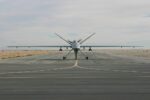Japan is set to significantly enhance the strike capabilities of its Maritime Self-Defense Force (JMSDF) by integrating U.S.-made Tomahawk cruise missiles onto its Aegis-equipped destroyers. The move marks a major doctrinal and operational shift for Japan’s postwar military posture and reflects Tokyo’s growing concern over regional threats from China and North Korea.
Tomahawks on Japanese Warships: Timeline and Scope
Under a 2023 Foreign Military Sales (FMS) agreement with the United States, Japan will acquire up to 400 Tomahawk Land Attack Missiles (TLAMs), including both Block IV and Block V variants. According to Japan’s Ministry of Defense (MoD), initial deliveries are expected in FY2025 (April 2025–March 2026), with operational deployment on JMSDF destroyers targeted shortly thereafter.
The integration will initially focus on two classes of Aegis-capable destroyers:
- Kongo-class (DDG-173/174/175/176): Four ships equipped with the AN/SPY-1D radar and Mk41 Vertical Launching Systems (VLS).
- Maya-class (DDG-179 Maya and DDG-180 Haguro): The newest Japanese Aegis destroyers featuring Cooperative Engagement Capability (CEC) and BMD upgrades.
Each ship is expected to carry a limited number of TLAMs—likely between 8 to 16 per hull—due to space constraints in their existing Mk41 VLS cells shared with SM-2/SM-3/SM-6 interceptors and ASROC anti-submarine weapons. However, this still provides Japan with a credible long-range precision strike capability for the first time since World War II.
Block IV vs. Block V: Capabilities Overview
The UGM/RGM-109E Tomahawk Block IV is a subsonic cruise missile with a range exceeding 1,600 km. It features GPS/INS navigation, terrain contour matching (TERCOM), Digital Scene Matching Area Correlation (DSMAC), and two-way satellite datalink for retargeting mid-flight. The newer Block V variant adds improved navigation resilience against GNSS jamming/spoofing and enhanced survivability against modern air defenses.
Block Va introduces maritime strike capability against moving naval targets using multi-mode seekers—a feature particularly relevant in countering Chinese naval forces in the East China Sea or Taiwan Strait scenarios. Block Vb includes a new Joint Multiple Effects Warhead System (JMEWS) for hardened targets like command bunkers or missile launch sites.
The specific mix of variants Japan will receive has not been fully disclosed publicly, but U.S. DoD contract notices indicate that both Block IVs and upgraded Block Vs are included in the package through Raytheon Missiles & Defense.
A Strategic Departure from Defensive Doctrine
This acquisition represents one of the most consequential shifts in Japanese defense policy since the establishment of the Self-Defense Forces in 1954. For decades, Japan adhered strictly to an exclusively defensive posture under Article 9 of its pacifist constitution. However, recent reinterpretations have allowed for “counterstrike capabilities” if an adversary launches or prepares an imminent attack.
The December 2022 National Security Strategy explicitly called for acquiring stand-off strike systems—including TLAMs—as part of a broader effort to deter regional threats through “multi-layered integrated defense.” This includes indigenous systems such as an extended-range Type 12 SSM (~1,000 km class) alongside imported assets like Tomahawks until domestic options mature post-FY2026.
Japanese officials emphasize that these weapons will be used solely for deterrence or retaliation against enemy missile bases or command nodes—not preemptive strikes—and only after political authorization at the highest level.
Operational Integration Challenges
Integrating Tomahawks into JMSDF platforms involves more than just physical installation into Mk41 VLS cells. Key challenges include:
- C4ISR Integration: Ensuring that JMSDF command-and-control systems can plan missions using U.S.-origin targeting data formats compatible with TLAMs’ mission planning software suites.
- Targeting Intelligence: Japan lacks indigenous satellite ISR networks equivalent to those used by the U.S. Navy for real-time targeting updates; cooperation via bilateral intelligence-sharing agreements will be crucial.
- Tactical Doctrine: JMSDF crews require new training regimes focused on strike warfare operations rather than traditional fleet air defense roles.
The MoD has reportedly begun joint training initiatives with U.S. Pacific Fleet units at Yokosuka Naval Base and is investing in improved C4ISR infrastructure under its Multi-Domain Defense Force initiative launched in FY2023.
A Regional Response to China’s Missile Superiority
The decision comes amid growing concerns about China’s expanding arsenal of land-based ballistic missiles—particularly DF-21D anti-ship ballistic missiles—and long-range cruise missiles deployed along its eastern seaboard. According to U.S. INDOPACOM assessments, China possesses over 1,000 conventionally armed missiles capable of striking all major Japanese bases within minutes from launch.
In contrast, until recently Japan lacked any means to respond beyond short-range air-to-ground munitions carried by F-15Js or F-35As. By fielding ship-launched TLAMs capable of striking mainland targets over 1,500 km away—including PLA rocket force infrastructure—Tokyo gains both deterrence leverage and operational flexibility within alliance frameworks such as QUAD or joint Indo-Pacific patrols.
Bilateral Cooperation and Industrial Implications
The deal further cements U.S.–Japan defense ties under frameworks like the Reciprocal Access Agreement (RAA) signed in January 2023. In addition to direct purchases from Raytheon Technologies (~$800 million value), there are ongoing discussions about licensed maintenance support within Japanese industry—possibly involving Mitsubishi Heavy Industries or IHI Aerospace for depot-level sustainment after delivery completion.
This may also pave the way for future co-development projects such as hypersonic glide vehicles or next-generation cruise missiles under bilateral R&D initiatives announced during Prime Minister Kishida’s visit to Washington in April 2023.
Conclusion: Toward a More Assertive Maritime Posture
The introduction of Tomahawks aboard JMSDF destroyers marks more than a hardware upgrade—it signals Tokyo’s evolving strategic calculus amid shifting Indo-Pacific power dynamics. While still constrained by constitutional limits on offensive warfare doctrine, Japan is clearly preparing for potential high-end conflict scenarios where rapid precision strike options are indispensable deterrents against peer adversaries like China or North Korea.
If successfully integrated both technically and doctrinally by late FY2025–early FY2026 as planned, these sea-based stand-off weapons will dramatically expand Japan’s ability to shape escalation dynamics across maritime domains—and reinforce allied interoperability across multiple theaters from Guam to Taiwan Strait contingencies.









